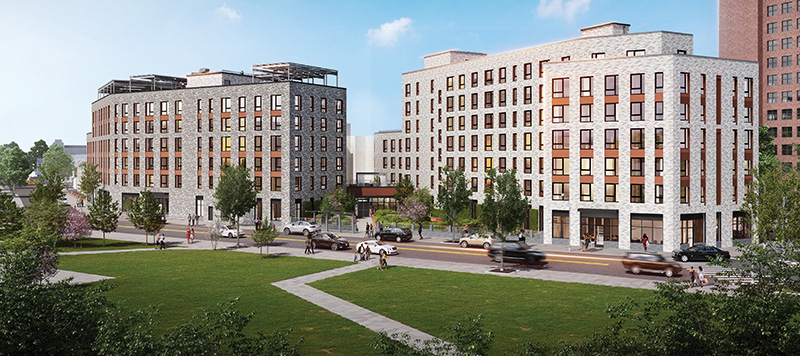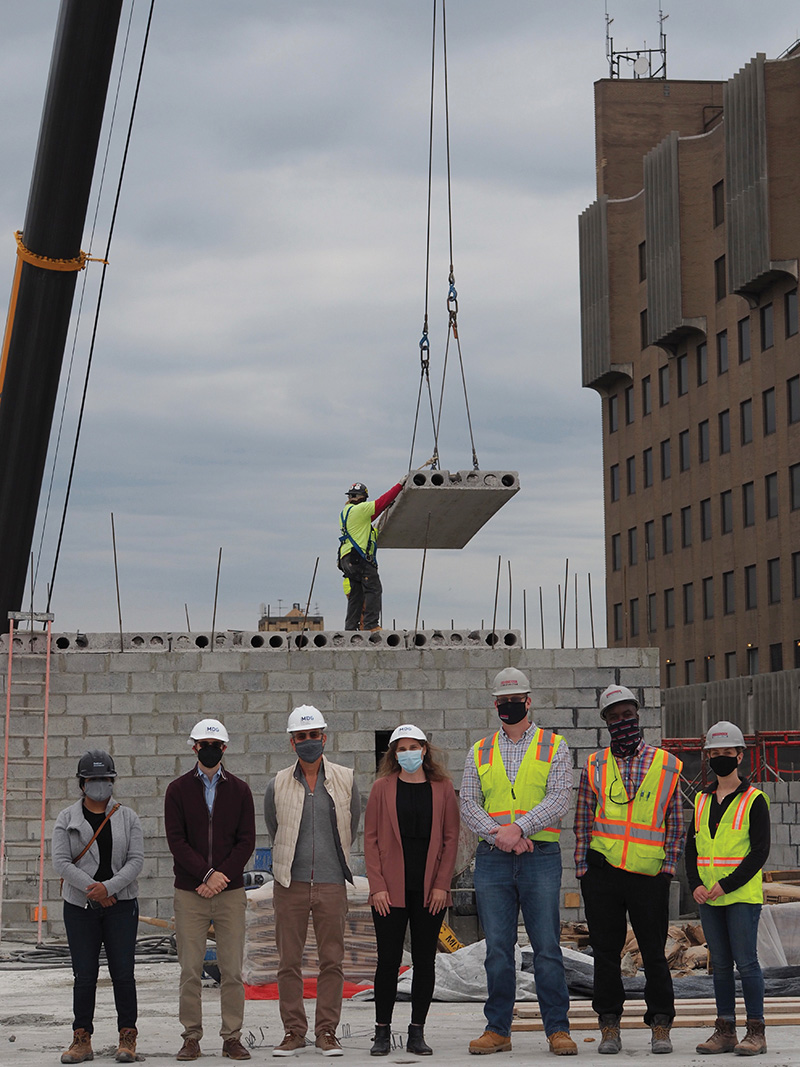
MDG Design + Construction and partners top out Vital Brookdale

Brooklyn, NY MDG Design + Construction, Smith & Henzy Advisory Group, Dattner Architects, New York Foundling, and partners celebrated the “topping off” of Vital Brookdale, which will create 160 affordable housing units and 25,000 s/f of health-focused community space in the Brownsville neighborhood.
 The total devlopment cost is reported to be $82 million.
The total devlopment cost is reported to be $82 million.
Located at 527 East 98th St., the former parking lot site was awarded through NYS Homes and Community Renewal’s Request for Proposals for the Vital Brooklyn Initiative. Vital Brookdale reflects the state’s vision to create a stronger, more sustainable central Brooklyn by outlining several core elements to achieve this vision including affordable housing and resilient, sustainable infrastructure. Vital Brookdale will be a model for transforming the lives of low-income residents and raises the bar for new environmentally friendly and health-focused affordable housing developments. The building will be certified to Passive House standards. Vital Brookdale will create 160 affordable housing units for households with annual incomes from 30% to 80% of AMI. A subset of the 160 units will be designated for youth aging out of foster care and individuals with developmental disabilities. Residents will enjoy access to a second-floor terrace, rear-yard and entry-courtyard which will include extensive landscaping, a dog run, as well as passive recreation, seating, and dining areas. Additional amenities will include a multi-purpose community room, game-room, library/resident co-working space, fitness room, laundry room, cold-storage locker and package rooms, and a bike storage room.
In addition to the residential amenities, Vital Brookdale will include several community facility spaces including a general and specialty clinic operated by Brookdale Medical Hospital, a community job training program, and a community fresh food program. The housing opportunities as well as the community facility programs will help meet the community’s longstanding need for promoting active mixed-use corridors, improving neighborhood connections, creating active and safe spaces, providing resources to support healthy lifestyles, connecting residents to jobs and job training, and improving housing stability.